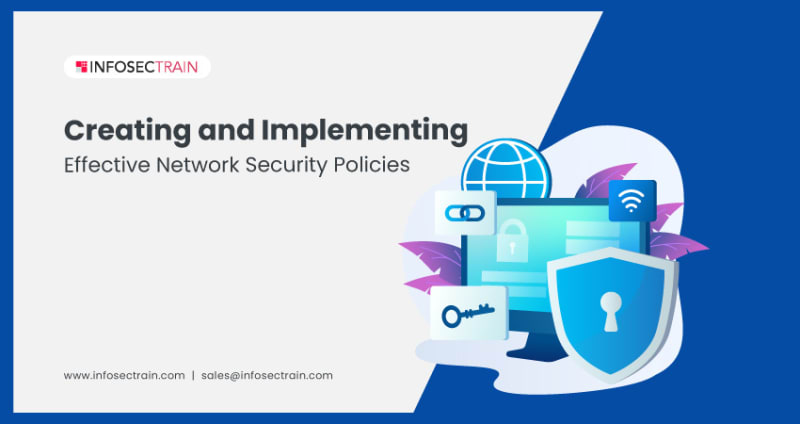In today's digital era, online services have become indispensable for the smooth functioning of modern businesses. As businesses rely heavily on the Internet for various operations, ensuring robust network protection has become paramount to any organization's cybersecurity approach. A meticulously crafted network security strategy serves as a fortress, safeguarding the organization's valuable data and assets and enabling its workforce to carry out their responsibilities efficiently. It is imperative to embrace a few fundamental principles that lay the foundation for a resilient and effective cybersecurity framework to establish a successful strategy.
Steps to Design and Implement Strong Network Security Policies
The design and effective implementation of network security protocols must be considered while developing a policy. The procedure can be divided up into a few steps by organization.
1. Identify and assess assets
Determine what assets need protection, such as data, systems, and infrastructure. Conduct a comprehensive assessment to understand the value and criticality of each asset.
2. Define security objectives
Establish clear goals for network security, such as maintaining data confidentiality, ensuring data integrity, and providing the availability of network resources. These objectives will guide the policy design.
3. Understand regulatory requirements and best practices
Get familiar yourself with industry-specific regulations and guidelines, such as the General Data Protection Regulation and the Payment Card Industry Data Security Standard. In addition, investigate best practices and recommendations from trustworthy resources such as the National Institute of Standards and Technology (NIST) and the Centre for Internet Security (CIS).
4. Develop a comprehensive policy framework
Create a network security policy that outlines the rules, guidelines, and procedures to be followed. Include sections on access controls, password management, encryption, incident response, and other relevant topics. Ensure the policy aligns with your security objectives and complies with applicable regulations.
5. Implement technical controls
Deploy security technologies and controls that align with your policy objectives. This may include firewalls, intrusion detection and prevention systems, secure network configurations, encryption mechanisms, and access control mechanisms like multi-factor authentication.
6. Establish user awareness and training programs
Educate employees and users about their roles and responsibilities in maintaining network security. Conduct regular training sessions and awareness programs to promote good security practices, such as strong password management, phishing awareness, and safe browsing habits.
7. Monitor and review
Implement a comprehensive monitoring system to detect and address security incidents. Regularly review and update your network security policies and controls to adapt to emerging threats and changing business requirements.
8. Conduct audits and assessments
Regularly audit and assess your network security controls to identify vulnerabilities and measure compliance with policies and standards. Use the findings to improve your security posture.
9. Respond to incidents
Develop an incident response plan that defines how to handle and mitigate security incidents. Ensure the plan includes containment, investigation, remediation, and communication steps.
10. Continuously improve
Network security is an ongoing process. Stay updated on emerging threats and security trends, and continuously improve your policies and controls to address new risks and vulnerabilities.
Network Security with InfosecTrain
InfosecTrain is a renowned leader in IT Security and Cybersecurity training. Our Network Security certification course offers comprehensive knowledge, covering fundamentals to advanced tactics. Enroll to learn the fundamentals and explore the vast potential and opportunities in Network Security.






Top comments (0)